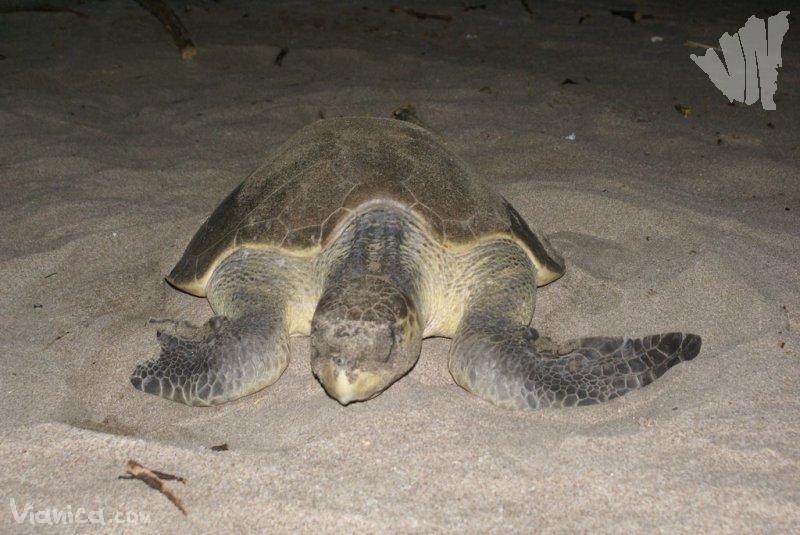Turtles’ absence from Nicaragua stronghold raises alarm for future – “It is heartbreaking to think that all of the conservation efforts could be in vain”

By Lindsay Fendt
15 April 2019
(The Guardian) – Every year, from November through March, leatherback sea turtles arrive to the secluded shores of the Río Escalante Chacocente wildlife reserve on Nicaragua’s Pacific coast to lay their eggs.
Though leatherback nesting habits vary, Chacocente has been a reliable egg-laying site for as long as conservationists have collected nesting data.
But this year, not a single leatherback came to Chacocente, and conservation groups in Costa Rica and Mexico, have recorded declines in sightings of the huge turtles.
“This is the first time it’s happened and the chances are that it will happen again,” said Alison Gunn, the Americas and Caribbean program manager for Fauna & Flora International, which tags all female leatherbacks that nest in Chacocente. “I do view it as an indicator that we should really sit up and take notice of.”
The largest of all sea turtles, leatherbacks can weigh up to 1,500lb (680kg) and reach over 6ft (2 meters) in length, placing them among the largest reptiles in the world.
But despite their enormous size, leatherback populations face threats from human activity, and the eastern Pacific population of leatherbacks is classified as critically endangered.
Both legal and illegal fishing have helped drive the decline, as well as egg poaching. In Central America sea turtle eggs are considered a delicacy and in some communities are held to be an aphrodisiac.
In 2018, Velkis Gadea, director of Flora & Fauna International’s turtle conservation programme in Nicaragua, said that whereas in the past 30 to 40 leatherbacks would nest in a season, that number had more recently dropped to five to 10. […]
“The reports that we have from the elders in the community say that back in the 80s, prior to a boom in poaching, there were turtles nesting in the hundreds at [Chacocente] ,and now there is a very discrete number of leatherbacks there,” she said. “We know that whilst we are doing all that we can to increase the recruitment of hatchling sea turtles there are still other factors.” […]
“It is heartbreaking to think that all of the conservation efforts could be in vain if we do not address the human-made threats to turtles once they reach the sea,” Gunn said. “Sea turtles have been around since the time of the dinosaurs – we must not let them die out on our watch.” [more]
Turtles’ absence from Nicaraguan stronghold raises alarm for future